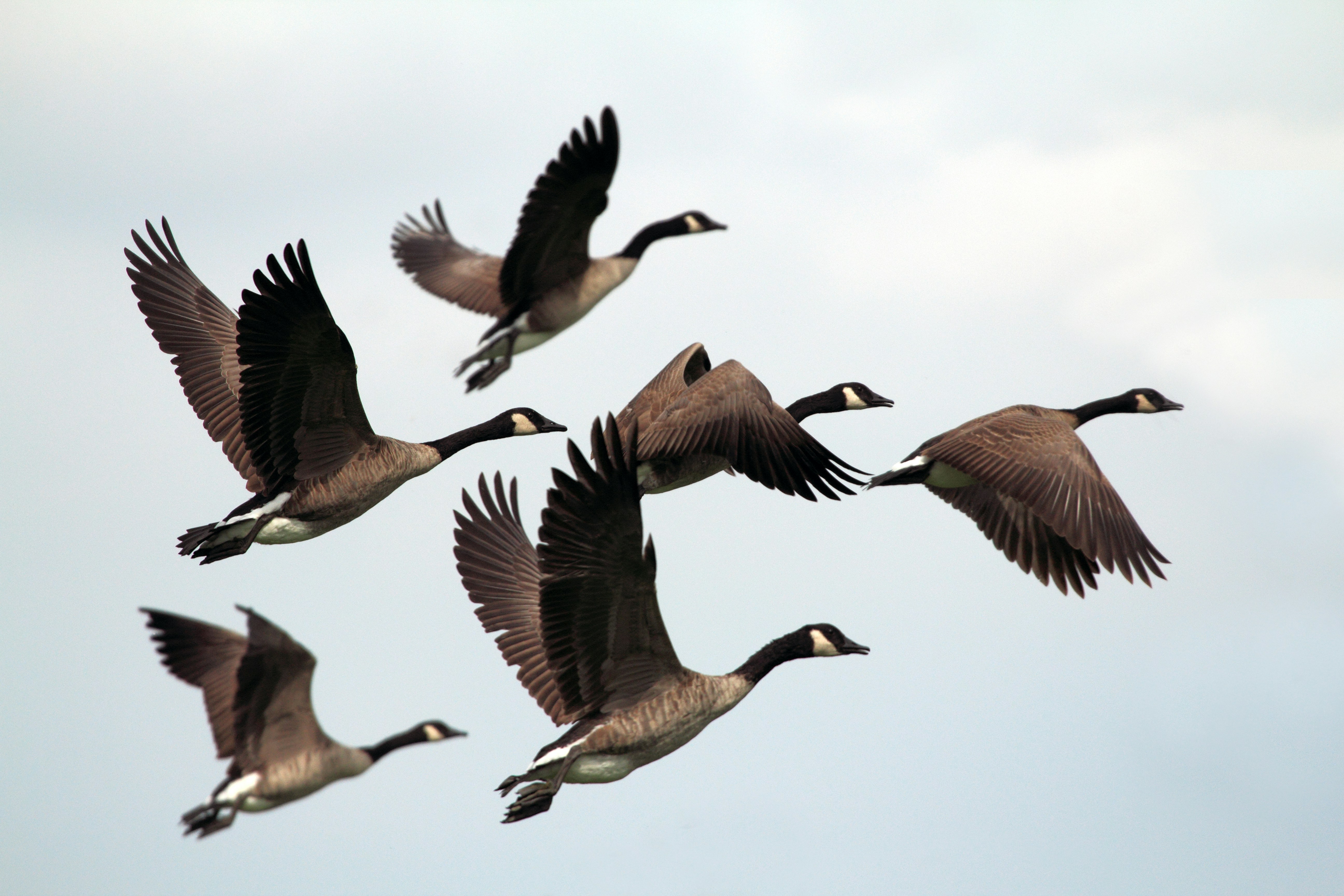Late Season Wildlife Problems
What can you do to protect your produce?
Patrick Gordon, Produce Safety Technician
![]()
Fall brings additional wildlife risks to produce farms. With the right monitoring and mitigation plans, your farm can be prepared.

As we get closer to winter and the days get shorter and colder, there are still many wildlife risks to produce. Even though we are nearing the end of the season, it is still very important to stay vigilant with your wildlife monitoring and mitigation programs. This time of year brings its own unique produce safety risks linked directly to wildlife.
During the fall, bird migration is the most visible change in wildlife behavior, which may cause additional produce safety risks on the farm. Depending on where you are located within the flyway, there may be more or less activity, and crops that are still being harvested are a produce safety concern.
Early goose migration can be a major risk to many late season crops. This fall, large flocks of geese have visibly been feeding in a variety of produce fields, posing a clear risk to produce safety as they produce a very large amount of poop that could contaminate produce. Sandhill Cranes can also pose a risk to produce safety. In the Kalamazoo area, there are thousands of Sandhills staging for their migration. While the vast majority of the Sandhills are feeding in large row crop fields, they will just as likely eat any fruits and vegetable that they can easily access. Since they are a much larger animal, they can do significant damage to a farm that is still harvesting.
Fortunately, this time of year is also hunting season for some of the most prevalent migratory birds. Goose season opens the first of September until September 30th, then waterfowl season reopens for goose and duck early October at different times throughout the state. Since it is hunting season, many of the birds have been educated on gunshots and will scare off easily. Sandhill Cranes are still federally protected in Michigan, so there is no hunting season for them. Farms can obtain nuisance permits for them if they are creating considerable financial damage. During the migration season, this will be difficult to obtain as they typically do not stay around for a long period of time. Other mitigation strategies will be more effective and can include noise devices, or visual deterrents, both of which can be effective for other nuisance wildlife species as well.
Before using lethal control, or relocating any nuisance animals, make sure to consult with your local Michigan Department of Natural Resources office, or a Produce Safety Technician. Regulations may vary due to some local ordinances. It is always best to understand what your options are before taking action. You can also consult this Michigan Department of Natural Resources page on Nuisance Wildlife, or the Michigan Hunting Season Calendar.
As the weather gets colder animals will be looking for places where they can nest to stay warm during the winter. Most people have seen an increase of rodent activity in packhouses, storage areas, and other outbuildings on the farm during this time. Mice, rats, and other smaller mammals can pose an additional risk to much of the fall produce being harvested and may also be an issue in hoop houses and greenhouses throughout the cold season. These animals can contaminate crops that are being stored in areas away from the elements such as apples by nesting and feeding on and in the produce.
During the cold season it is important to continue monitoring for wildlife activity in enclosed areas, especially where produce is still present. Keep up with checking traps and be vigilant with monitoring for animal contamination like poop, gnaw marks, or nests. If you see an increase in trapped animals or other signs, it is time to increase mitigation measures. Try to locate where they are entering and attempt to seal up these locations, if possible. It is also important to increase traps if increased animal activity is observed in order to cut down the population living in the affected area.
While many farms are winding down for the season and harvest is wrapping up, there are still produce safety risks posed by wildlife. It is important to continue your monitoring and mitigation plans, while also preparing for the risks that the colder weather may bring. If you are having trouble with wildlife, your local Produce Safety Technician is available to help. Use this map to find out who you Produce Safety Technician is and how to get a hold of them.



 Print
Print Email
Email